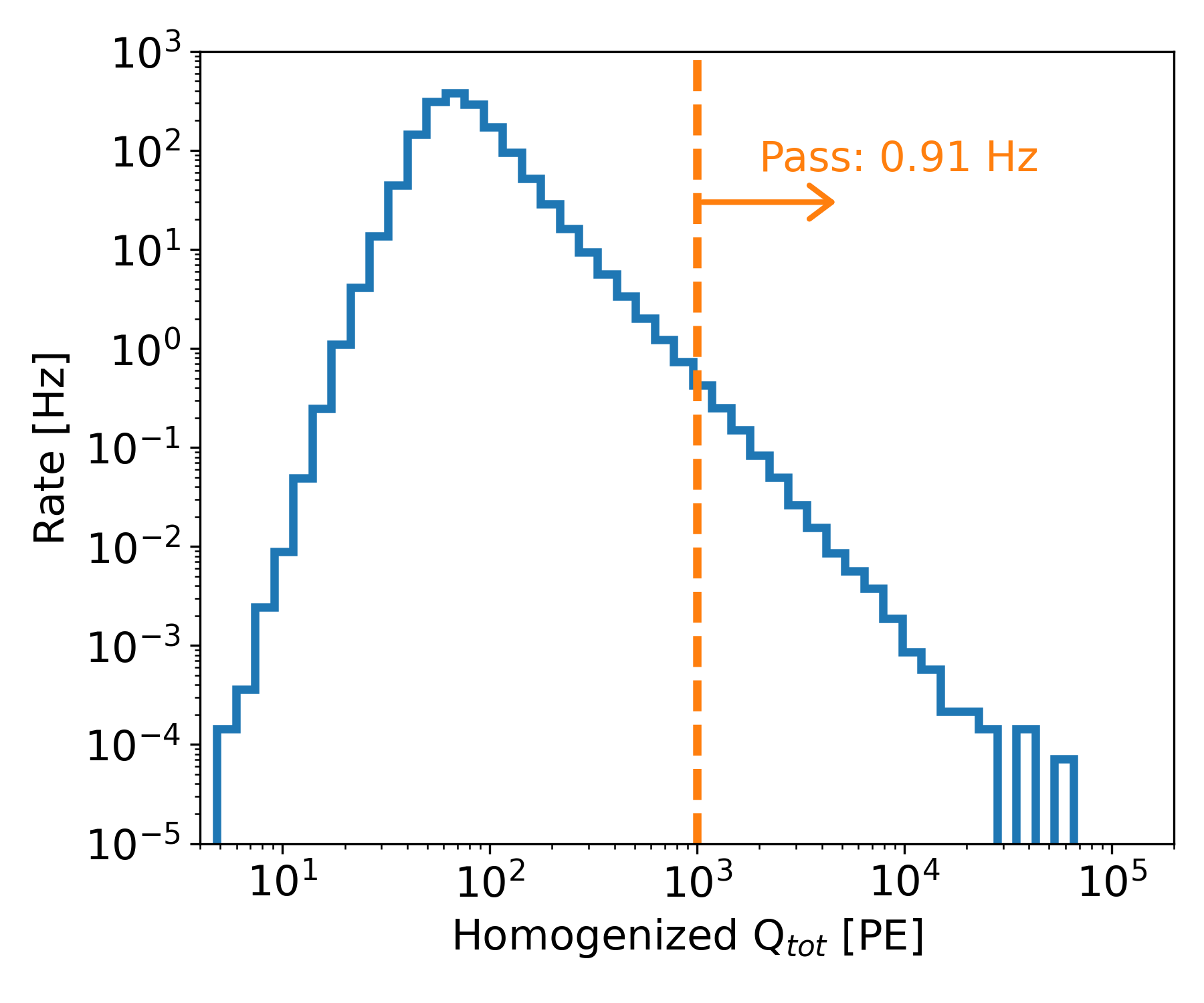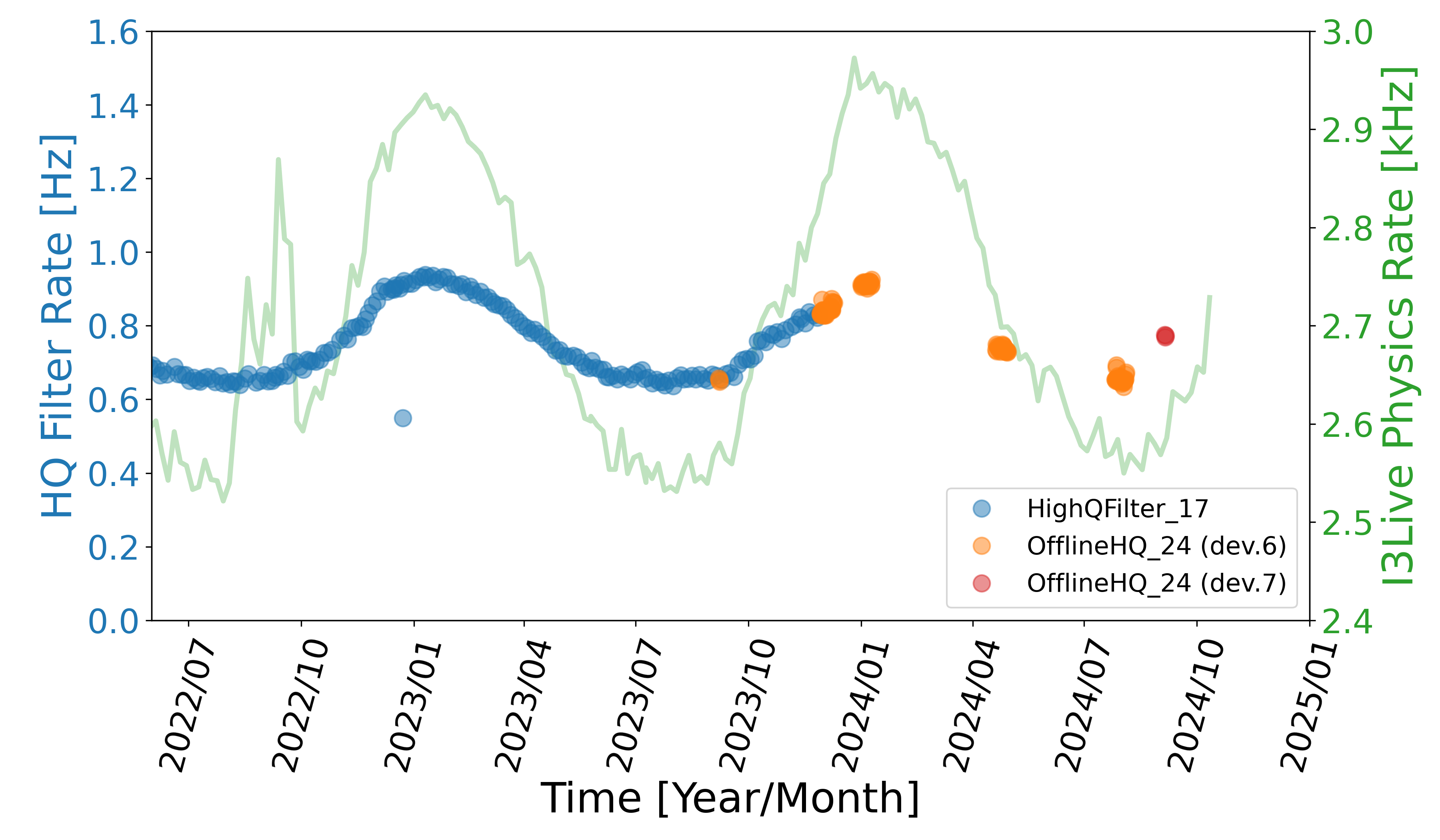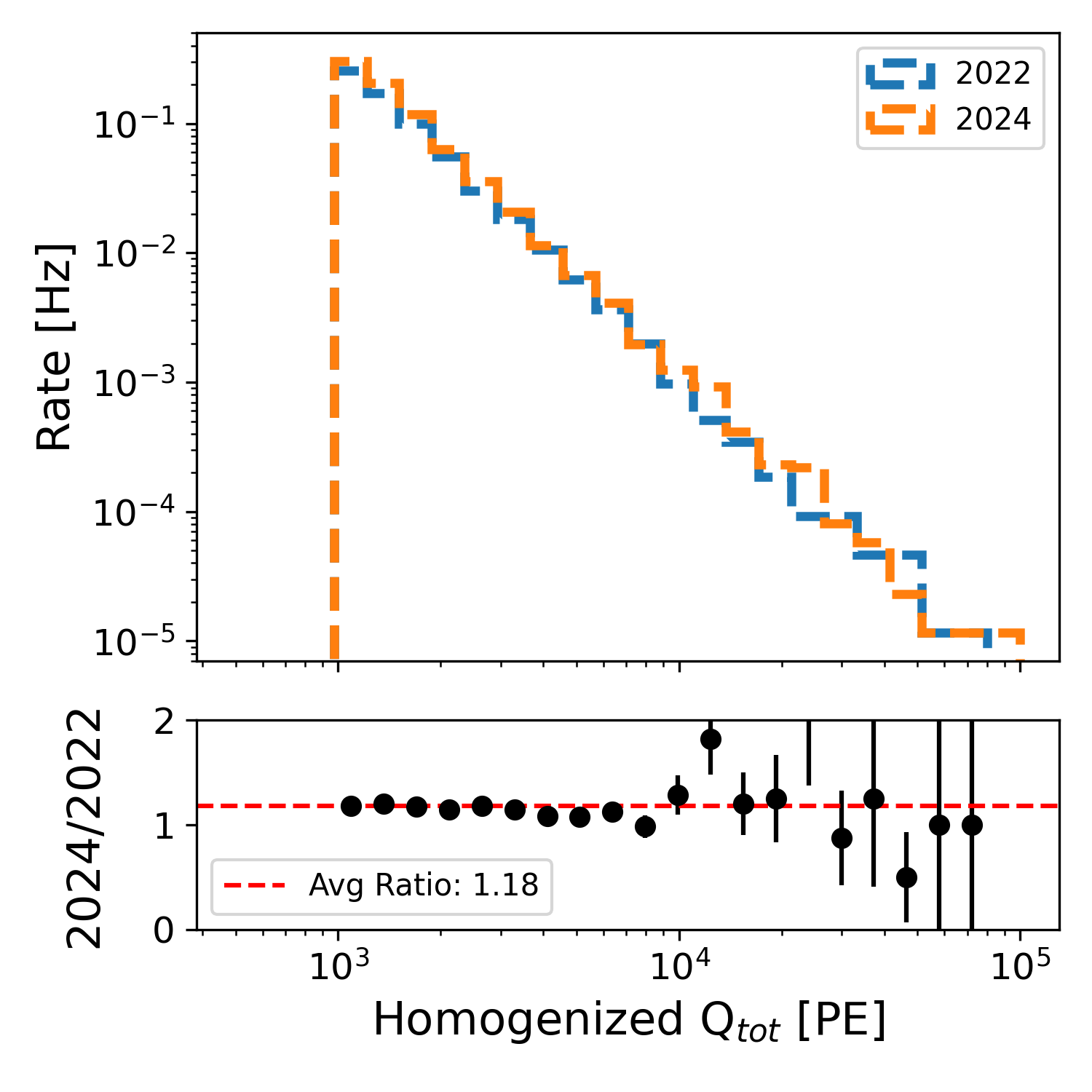High Charge Filter¶
Maintainer: Brian Clark (baclark@umd.edu)
Overview¶
The goal of the high charge filter is to preserve bright (and therefore high charge) events. The brightness threshold is currently set to 1000 PE.
Technical Documentation¶
This filter will run on any and all triggered events (regardless of filter mask).
This filter will run on
InIceSplitsplit frame types.- Inputs
The
SplitInIcePulsespulse series, which is a split, but uncleaned, pulse series.No other input or cleaning is needed.
- Outputs
OfflineHQ_24__Homogenized_QTot, an I3Double containing the homogenized charge of the pulse seriesOfflineHQ_24, an I3Bool signifying if the pulse series in that frame had >1000 PE of charge.
The filter runs the HomogenizedQTot segment from the VHESelfVeto module.
The filter should produce a frame object containing the charge of that P-frame,
and a boolean indicating if the charge is above a 1000 PE threshold.
Physics Documentation¶
The major goal of the filter is to preserve bright, and therefore high energy, events. These events are critical to many analyses in the diffuse WG, include HESE, EHE, MESE, most tau searches, and more.
A histogram of the event rate as a function of charge is provided below in Fig 1. (This figure was made by analyzing the PFFilt files for run 138821.) The expected rate of events passing the filter is around 0.8Hz, which is below the 1 Hz target for offline filters.

Fig 1: A histogram of the event rate as a function of homogenized total charge.¶
The filter rate varies as a function of time (see Fig 2 in the Verification section below). Anything between ~0.6 Hz and ~1 Hz is reasonable, depending on season. The rate of the high Q filter tracks the overall physics trigger rate as recorded by I3Live (and plotted on the right vertical axis in green of Fig 2). This is expected, as most events are of atmospheric origin, and the atmospheric muon and neutrino rates have a known temperature (and therefore seasonal) dependence. More information can be found on various wikis.
Verification¶
To verify the performance of the filter, we compare the filter rate across 2021-2022 (the “old” pass2 processing), 2023 (the “hacked” processing where the pulse unfolding was changed, but the old pass2 scripts were shimmed in place), and 2024 (the new proposed revised offline processing).

Fig 2: A plot of the rate of the high charge filter over time.¶
As can be seen in the plot above, there is good agreement between 2022 and 2023. In moving to 2024, we note an ~15% increase in the overall trigger rate. This is especially visible if we compare the overall rate as a function of charge from 2022 to 2024, as in Fig 3 below. The plot shows two histograms from early September 2022 (runs 137000, 137010, and 137020) and September 2024 (runs 139834-6). The ratio between the two (in the bottom sub-panel) shows an 18% increase going from 2022 to 2024.

Fig 3: A plot of the rate of the high charge filter as a function of charge. The subpanel shows the ratio of 2024 to 2022.¶
This increase is related to a change in the pulse unfolding. As discussed in a plenary talk at the 2024 Madison collaboration meeting, a ~5% increase in charge was expected from disabling the MeanATWDCharge and MeanFADCCharge corrections in the waveform unfolding. Given that most of the events in these histograms are atmospheric muons, with a spectral index \(\gamma\), we expect the impact on the event rate \(dR\) due to a change in charge normalization \(dQ\) to be \(dR = \gamma dQ\). So a ~5% increase in charge should present as an ~15% increase in the overall rate, which is precisely what is observed.
